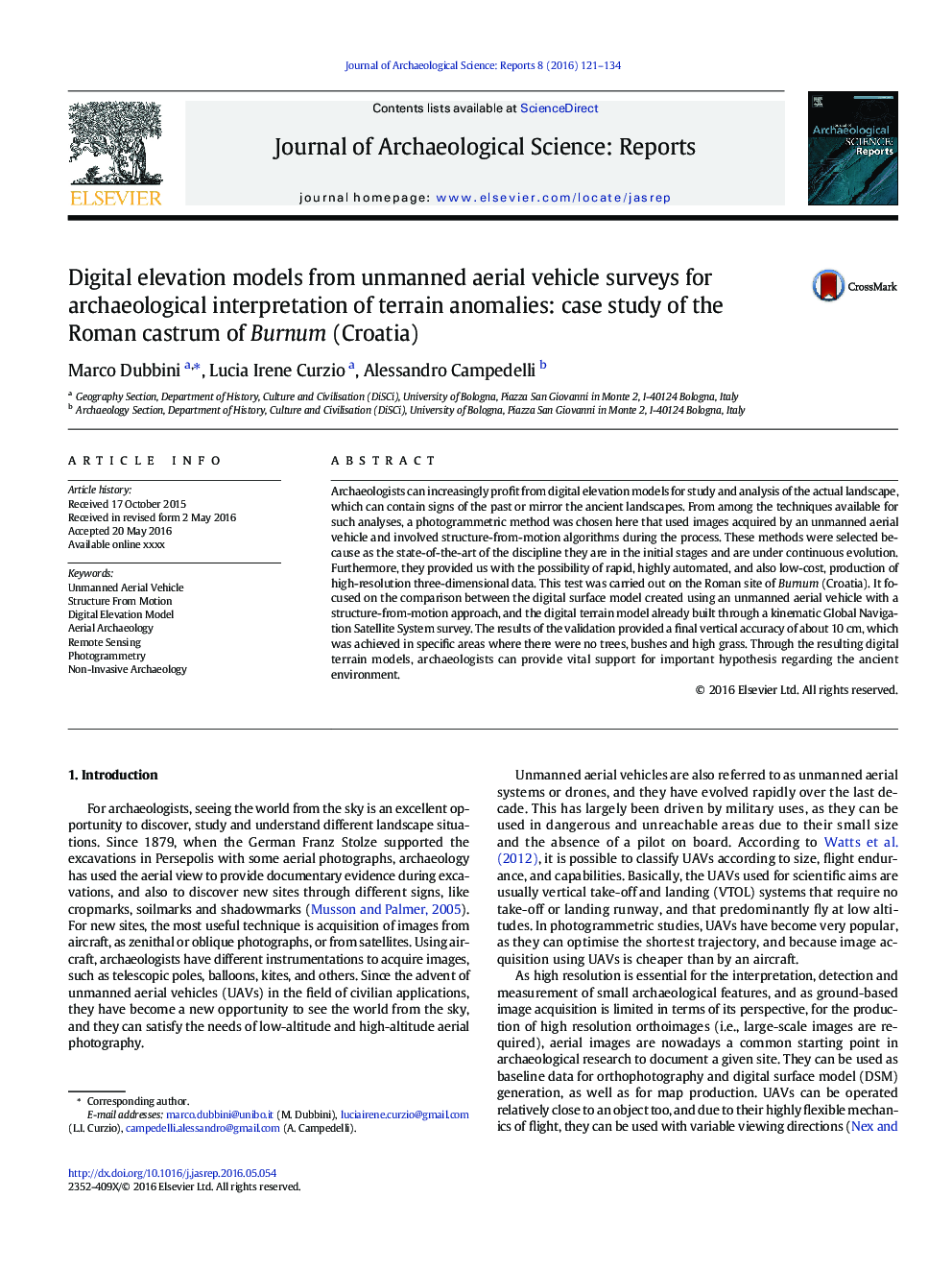| Article ID | Journal | Published Year | Pages | File Type |
|---|---|---|---|---|
| 7445405 | Journal of Archaeological Science: Reports | 2016 | 14 Pages |
Abstract
Archaeologists can increasingly profit from digital elevation models for study and analysis of the actual landscape, which can contain signs of the past or mirror the ancient landscapes. From among the techniques available for such analyses, a photogrammetric method was chosen here that used images acquired by an unmanned aerial vehicle and involved structure-from-motion algorithms during the process. These methods were selected because as the state-of-the-art of the discipline they are in the initial stages and are under continuous evolution. Furthermore, they provided us with the possibility of rapid, highly automated, and also low-cost, production of high-resolution three-dimensional data. This test was carried out on the Roman site of Burnum (Croatia). It focused on the comparison between the digital surface model created using an unmanned aerial vehicle with a structure-from-motion approach, and the digital terrain model already built through a kinematic Global Navigation Satellite System survey. The results of the validation provided a final vertical accuracy of about 10Â cm, which was achieved in specific areas where there were no trees, bushes and high grass. Through the resulting digital terrain models, archaeologists can provide vital support for important hypothesis regarding the ancient environment.
Keywords
Related Topics
Social Sciences and Humanities
Arts and Humanities
History
Authors
Marco Dubbini, Lucia Irene Curzio, Alessandro Campedelli,
